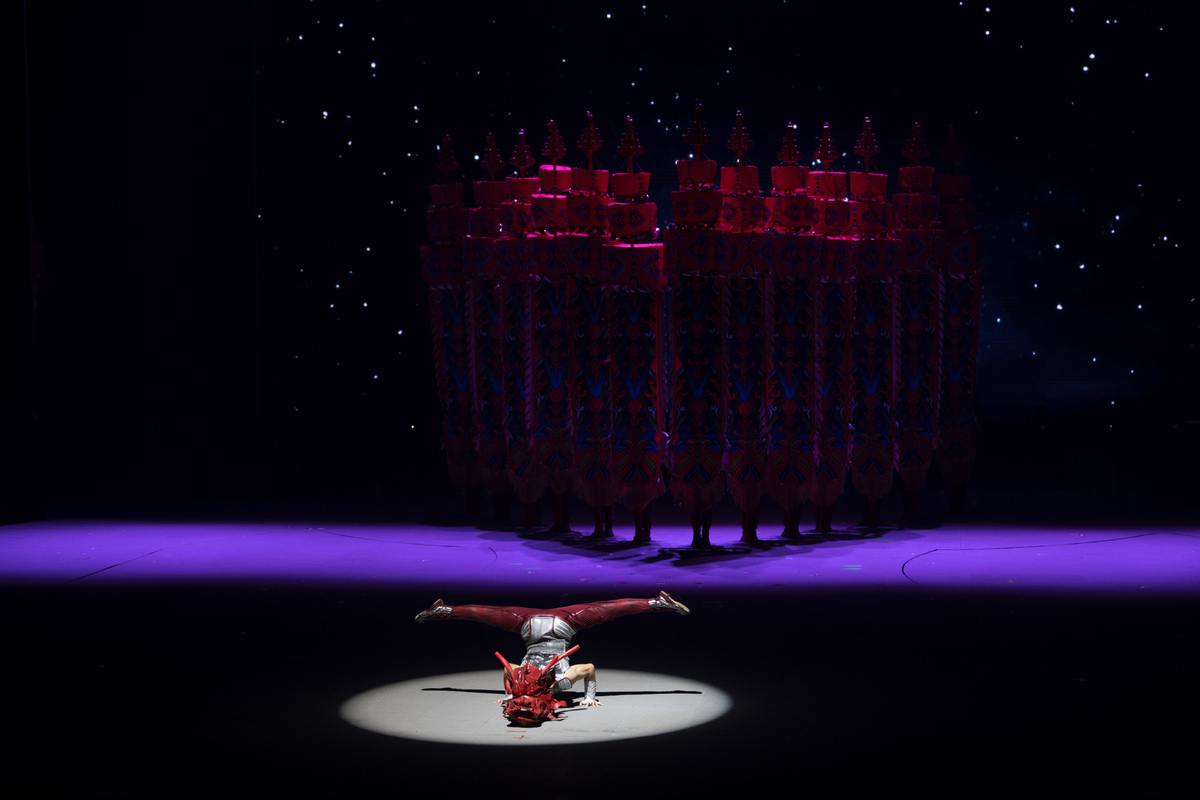

Puyang has a centuries-long history of performing this thrilling art -- the art began there during the Spring and Autumn period (770-476 BC) and thrived during the Ming (1368-1644) and Qing (1644-1911) dynasties.
At first, acrobatics was merely seen as interesting body exercises done in the crop fields during the slack season. People would use commonplace straw hats and farm tools for playful juggling. Later, their skills improved and developed into signature acrobatics with strong local characteristics of rural China.
Zhang Xiaomeng, a 23-year-old acrobat in Puyang, started to learn acrobatics at the age of 10. Two years ago, the young artist was invited to perform in shows abroad.
"I was a little nervous at first, but warm applause during my performance gradually made me more confident. I felt so proud when foreign friends welcomed and appreciated our acrobatics," Zhang recalled.
During the just-concluded acrobatic competition, Zhang's troupe showed breathtaking acrobatic feats, including juggling and rotating in mid-air about ten meters above a 16-meter-long "swing bridge" set up on the stage.
Puyang acrobatics is evolving thanks to not only young blood like Zhang, but also the influence of other extreme sports and fine art including drama, gymnastics, diving, and magic shows.
At present, Puyang has nearly 30,000 registered acrobatic practitioners and more than 50 local acrobatic troupes, whose performance markets include over 30 countries and regions.
"Puyang is a veritable acrobatics capital. Acrobatics has led the local culture industry and become its calling card on the global stage," said Tang Yanhai, Party secretary of the China Acrobats Association.